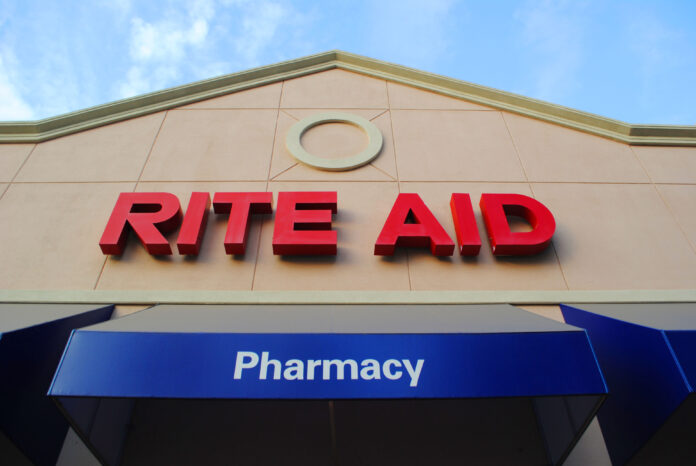Rite Aid agreed on Sept. 24 to pay a $12 million settlement for their toxic waste dumping. Yolo County received $420,000 for how the toxins have affected the local landfill. Of that $420,000, $162,500 of Yolo County’s portion has gone toward the Environmental Health Unit with the remainder going to the district attorney’s office to continue investigating similar crimes.
The Rite Aid lawsuit was filed by district attorneys (DA) in San Joaquin, Los Angeles and Riverside with additional attorneys representing various other cities and counties, including Yolo County. Rite Aid allegedly dumped toxic waste from over 600 outlets statewide.
In Yolo County alone, there is a Rite Aid in Davis, West Sacramento and Woodland, including the Northern California Distribution Center in Woodland.
Yolo County District Attorney Jeff Reisig was one of the DAs on the case.
“Environmental crimes attack finite resources such as landfills and our water. There is only one landfill in Yolo County and we all share it,” Reisig said in a statement.
Yolo County’s Waste Distribution Center was affected in the incident, and Waste Reduction and Sustainability Manager Marissa Juhler explained that Rite Aid is not the only store in question. The DA looks through all the trash and these investigations do have a positive impact.
“A good example is the Bel-Air grocery store … people don’t realize that now they have little garbage cans that say ‘do not throw needles or batteries in.’ Five years ago this didn’t exist, but they’ve come up with solutions both internally and externally. We always put out there that it’s not the end of the story, it’s really just the beginning starting with these organizations taking the right step to be more conscious of where their waste ends up,” Juhler said.
Vice President of California Hazardous Materials Investigation Association (CHMIA) and Vice President Senior Enforcement Officer of the Yolo County DA’s Office Heidi D’Agostino explained the investigation process.
“CHMIA basically looked through trash for unlawfully placed waste and traces of waste in streams. We weren’t the only ones that found waste and hazardous materials in dumps — these [materials] were found across the state,” D’Agostino said.
Rite Aid had dumped illegal substances such as aerosols, pesticides, bleach, paint, medicine, household cleaning solvents and other poisons into various dumps across the state. The reason for this, D’Agostino believes, is a lack of implemented training programs.
“Corporations should typically have accounts with lawful waste companies that will pick up hazardous waste. The store is responsible for proper waste disposal unless they go out by front-door sale,” D’Agostino said. “What the settlement has done is help cover the cost to correctly dispose of the waste.”
The remainder of Yolo County’s portion of the settlement, D’Agostino added, will go to continuing similar investigations and aiding in supplemental training of employees on disposal methods — training that wasn’t occurring for at least four years, if not more. These new requirements have been put into effect immediately.
Students believe that corporations such as Rite Aid do not focus on environmental repercussions of their business.
“We don’t place value on our ecosystem’s function. They’re paying for the damages but it might not take into account the scope of the damage. This is a classic example — corporations don’t regard the environment the way they should,” said Maya Argaman, a second-year environmental science and management major.
Upon hearing of this incident, some students felt a conflict of emotions because while Rite Aid was penalized, the damage is somewhat irreparable. Co-founder of the UC Davis Environmental Club Phillip Tran, a fourth-year environmental policy analysis and planning economics double major, discussed Rite Aid’s actions.
“When I hear about these events, I tend to try and not support the organization [and] business that is causing harm — in this case, Rite Aid. I’m glad that there are environmental health agencies that are in place and are able to keep companies accountable for their actions,” Tran said.
Since the settlement, Rite Aid has worked on other ways to address the issue. However, they have a long way to go in terms of making lasting changes.
“In cases like these, you can’t resolve the issue until you have addressed the training to make the correct decisions. Since the settlement, they have started a more robust training program to identify products through a scanner to indicate the wastes in a product and proper disposal methods,” D’Agostino said.
Students have commented that justice may have prevailed in this case, though it is a complicated matter.
“This penalty might set a precedent for other companies saying that there are consequences … instilling preventative measures can protect our environment for years to come, so it’s good [Rite Aid] was held accountable,” Argaman said.
And though the sum of money has accounted for some of the damage, officials have said nothing can take back what damage has already been done. The settlement, however, will serve as a way to periodically check in on Rite Aid as well as help future investigations of hazardous waste dumping.
“The extent of the damages that may be incurred from their lack of responsible decision-making may last much longer and cause much more harm than $12 million,” Tran said. “…These damages cannot be simplified into a number … In order to make real change, we must not wait until after unfortunate events happen, but rather make sure we do everything to prevent damages from occurring.”




